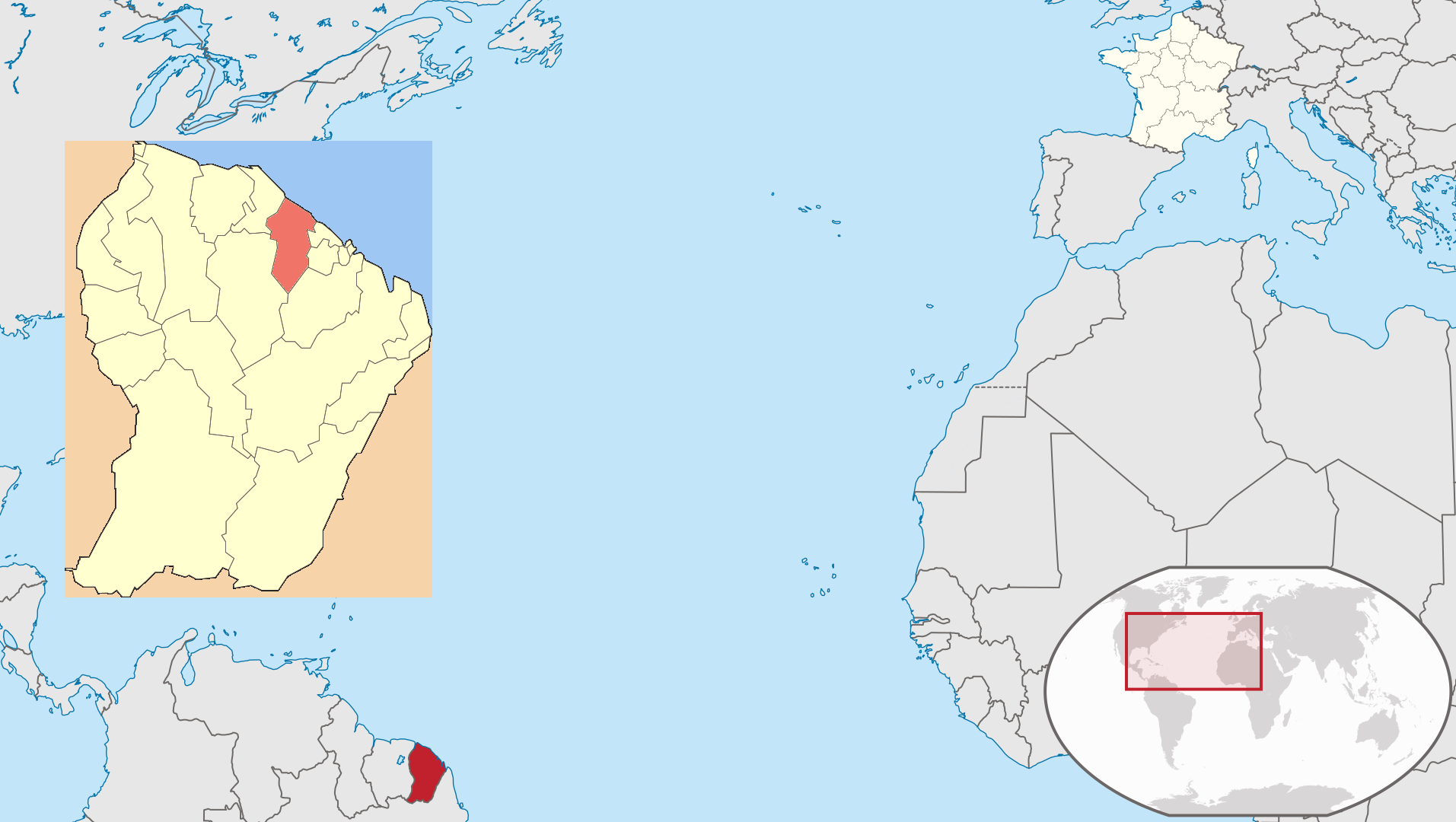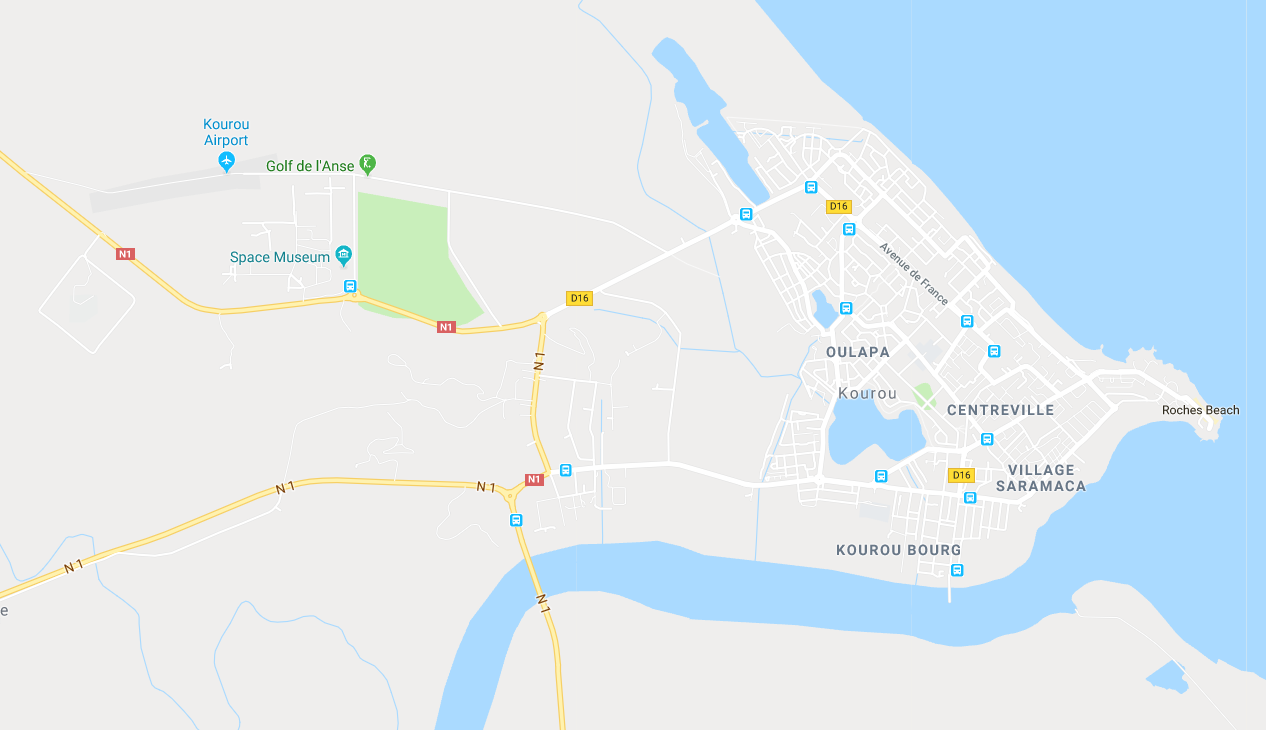Europe’s Spaceport in French Guiana is ideally suited to it’s purpose in terms of location. Situated on the northern coast of South America, launchers lifting into orbit have plenty of free space both to the North and to the East, surrounding by vast stretches of empty land and sea. Logistics is the key to most activities and space is no exception.

The location of French territory French Guiana in relation to France, and the location of Kourou commune in relation to French Guiana. Europe’s Spaceport is located near the coast.
Question: Europe’s Spaceport is a launch site, not a manufacturing site… so how do the Ariane and Vega launch vehicles get there from their manufacturing sites in Europe?
Answer: In bits and pieces, by boat.
That sounds fairly straightforward but, as always, the devil is in the details.
The Spaceport’s hometown of Kourou is named as such because it lies at the mouth of the river also called Kourou. The tide is non-negligible and there are a few submerged rocks in the river channel. Any boat entering the mouth of the river to dock at the Pariacabo harbour must take the rocks, the tide, and the bridge into account. This means that the boat used to transport the rocket parts from their manufacturing sites across the Atlantic has been specifically designed for the Kourou harbour conditions.
The company that performs these transports of Ariane 5, Vega, and Soyuz is called Compagnie Maritime Nantaise (MN). The two boats in use for us here at the Spaceport are called MN Colibri (meaning hummingbird) and MN Toucan. They incorporate several very specific features. I actually had the opportunity to visit MN Colibri a few weeks ago and was given a grand tour.

Map of Kourou showing river Kourou, with the Spaceport located next to Kourou airport.
Special features
- The boat’s length (115.5 m) is long enough to take the Ariane transport containers (which are big!) yet small enough to slalom between the various submerged rocks in the channel AND do a 180 degree turn upon arrival without hitting the Kourou bridge, so that it can face forward for the unloading.
- The maximum breadth (20 m) has been designed to fit the channel, which is only 60 m wide in the maritime part and only 40 m wide in the river part of the fairway. When you see the MN Toucan or the MN Colibri on the water it really looks like it is floating on top of the surface. Additionally, the arrival and departure times of the boat need to conform to the high tides, which change. The ship only has a draft of 3.80 m even keel, and a keel cooling system for the two main engines
- Unloading is done via a ramp at the rear of the boat. Depending on the tide, an angle is created between the jetty and the boat. The segments being transported are very long, so in order to ensure that the long segments can unload without scraping the jetty, the rear of the boat has ballast tanks that can be filled with water to lower the rear.
- The loading area is fitted with secure anchorage points located to fit the containers.
- With only one exception, the launcher segments being shipped are empty shells. They are assembled and filled on site at the Spaceport. The exception is the first (upper) segment of the solid propulsion boosters coming from Italy. The cargo area is also fitted with a sprinkler system.
- The bridge is located at the forward end of the ship. This is particularly great for seeing where you are going when moving in and out of the harbour… but less ideal in heavy seas.
Loads to French Guiana include containers with the various segments of the launchers, and loads from French Guiana include the empty containers going back to Europe, as well as liquid waste from the Spaceport that we can not treat in French Guiana.
Upon arrival, one of the first things you notice is the size of the boat. It totally fills the harbour!

When I arrived teams were busy. The ramp was down and empty containers were lined up, ready for loading.

One by one the containers are moved in with skill and precision.

Special vehicles manoeuvre the containers into position.

It is 15:00 and very hot inside. The noise is deafening and I do not envy them as they complete the heavy tasks of manipulating the chains needed to lock the containers in place.

The protected cargo area is big, but it quickly fills up.

The workers agree to pose for a picture!

The long trailer. The rear end of the boat can be pushed down to reduce the angle with the pier.

We use the inner stairs to get to the bridge. A 40-tonne crane allows the loading of additional cargo on the upper deck.
During my visit the cargo loading had almost been completed. The following day MN Colibri would be on her way back across the Atlantic to deposit her load and pick up a “fresh” launcher…

A view from the bridge
As I stand there on the bridge I am toying with the idea to join her on a cross-Atlantic voyage… That would be something to write home about!
Charlotte Beskow
Head of the ESA Space Transportation Office in Kourou

Discussion: no comments